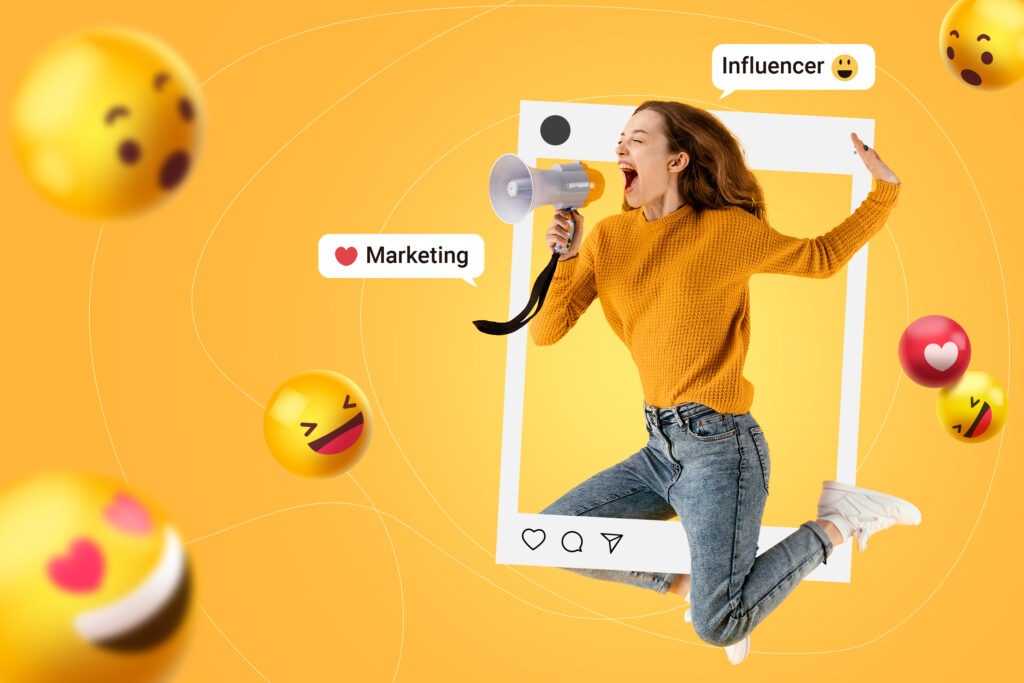In today’s digital world, influencer marketing has become a powerful tool for brands to connect with their target audience and boost their visibility. Platforms like Instagram, YouTube, and TikTok have given individuals immense influence over consumer behavior. But when it comes to picking influencers for marketing campaigns, brands often face a dilemma: should they go for micro-influencers or macro-influencers? Let’s break down the differences to help you make an informed choice.

1.Micro-Influencers:
Micro-influencers have a smaller but highly engaged following, usually ranging from 1,000 to 100,000 followers. They’re known for their niche audience and high level of interaction. These influencers focus on specific topics like beauty, fitness, or travel and have built a loyal community around their content.
The big plus with micro-influencers is their authenticity. Because they have a smaller following, their audience sees them as relatable and trustworthy. This makes them perfect for niche marketing campaigns targeting specific groups. Plus, they usually charge less for sponsored content, making them budget-friendly.
Another perk is their high engagement rates. With a smaller following, micro-influencers can connect more closely with their audience. They respond to comments, messages, and create a sense of community. This deep engagement often leads to higher conversion rates for brands.
But there are challenges too. Because they have a smaller reach, you might need to collaborate with several micro-influencers to get the exposure you want. Managing multiple partnerships can be time-consuming and needs careful coordination.
2.Macro-Influencers:
Macro-influencers, on the other hand, have a massive following, ranging from 100,000 to millions of followers. They include celebrities, social media stars, and industry experts with widespread recognition and influence. Macro-influencers can reach a huge audience and create significant exposure for brands.
Their big advantage is their wide reach. With millions of followers, they can get your brand in front of a vast audience with just one post. They’re great for boosting brand awareness and reaching a broad audience. Also, macro-influencers often have credibility and authority in their field, which adds legitimacy to your brand.
They’re also good at generating buzz. Their large following can create a ripple effect, with their followers sharing and engaging with their content, spreading your brand message even further.
But there are downsides too. Macro-influencers might lack the authenticity of micro-influencers. They often work with many brands and might promote products that aren’t relevant to their audience, leading to skepticism. Plus, they usually charge higher fees for sponsored content, which might not be feasible for brands with limited budgets. Also, managing engagement with such a large following can be a challenge.
3.Advantages of Micro-Influencers:
1.Authenticity:
Micro-influencers often have a more authentic and genuine connection with their audience. Their smaller following allows for more personal interactions, fostering trust and credibility.
2.High Engagement Rates:
Micro-influencers tend to have higher engagement rates compared to macro-influencers. Their audience is more likely to actively engage with their content, resulting in more meaningful interactions and higher conversion rates for brands.
3.Niche Audience:
Micro-influencers typically focus on specific niches or interests, allowing brands to target a highly relevant audience. This specificity can lead to better alignment with the brand’s target demographic and higher quality leads.
4.Cost-Effectiveness:
Working with micro-influencers is often more cost-effective for brands, as they typically charge lower fees for sponsored content. This makes micro-influencers an attractive option for brands with limited marketing budgets.
5.Word-of-Mouth Marketing:
Micro-influencers are seen as peers by their followers, making their recommendations feel more like word-of-mouth endorsements. This personal connection can result in higher trust and loyalty from consumers.
4.Advantages of Macro-Influencers:
1.Wide Reach:
Macro-influencers have a larger following, ranging from hundreds of thousands to millions of followers. This allows brands to reach a much broader audience and increase their visibility significantly.
2.Brand Authority:
Macro-influencers often have established credibility and authority within their respective industries or niches. Their endorsements can lend legitimacy to a brand’s message or product, influencing consumer perceptions and purchasing decisions.
3.Mass Awareness:
Macro-influencers have the ability to generate mass awareness and create buzz around a brand or product. Their large following and influential status can lead to widespread exposure and increased brand recognition.
4.Efficiency:
While macro-influencers may have higher upfront costs, their ability to reach a large audience can result in more cost-effective campaigns in terms of cost per impression or engagement. This efficiency can be particularly beneficial for brands with broader marketing objectives.
5.Creative Collaboration:
Macro-influencers often have experience working with brands and agencies, making them skilled collaborators. They can provide valuable insights and contribute creatively to marketing campaigns, enhancing the overall effectiveness of the partnership.

5.Disadvantages of Micro-Influencers:
1.Limited Reach:
Micro-influencers have a smaller following compared to macro-influencers, which means they may not reach as many people with their content. This can limit the overall exposure and visibility of a brand’s message or product.
2.Scale and Efficiency:
Working with multiple micro-influencers to achieve a desired reach can be time-consuming and require coordination. Managing numerous partnerships may pose challenges in maintaining consistency across campaigns and messaging.
3.Professionalism:
Some micro-influencers may lack experience or professionalism in working with brands. This can result in inconsistencies in content quality, communication, and adherence to campaign guidelines.
4.Risk of Over-Saturation:
As micro-influencer marketing becomes more popular, there is a risk of over-saturation within certain niches or industries. This can lead to diminished impact and effectiveness of influencer campaigns as audiences become inundated with sponsored content.
5.Limited Credibility in Some Cases:
While micro-influencers are generally perceived as authentic, there may be instances where their credibility is questioned, particularly if they endorse products or services outside of their niche or area of expertise.
6.Disadvantages of Macro-Influencers:
1.Cost:
Macro-influencers often charge higher fees for sponsored content compared to micro-influencers. This can be a significant investment for brands, particularly those with limited marketing budgets.
2.Authenticity Concerns:
Macro-influencers may face challenges in maintaining authenticity and relatability with their audience, especially if they work with numerous brands or promote products that are not aligned with their personal brand.
3.Lower Engagement Rates:
Despite their large following, macro-influencers may have lower engagement rates compared to micro-influencers. Their content may not generate the same level of interaction and conversation among their audience.
4.Less Targeted Audience:
Macro-influencers appeal to a broad audience, which may include individuals who are not part of the brand’s target demographic. This can result in lower conversion rates and less effective targeting compared to micro-influencers.
5.Potential Oversaturation:
Working with highly visible macro-influencers may lead to oversaturation of sponsored content, especially if they endorse multiple products or brands within a short period. This can dilute the impact of the influencer’s endorsement and reduce audience engagement.
Conclusion
The debate between micro-influencers and macro-influencers boils down to a careful consideration of the brand’s goals, target audience, and budget. Both categories of influencers offer unique advantages and disadvantages that can significantly impact the success of a Digital marketing campaign.
